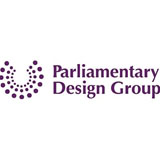Parliamentary group addresses gender inequality in design
By Scott Billings

Issues surrounding the paucity of women in the design industry were addressed by Deputy Prime Minister John Prescott at a Westminster meeting organised by the Parliamentary Design Group last week.
The event is part of the cross-party parliamentary group’s Designing a Greater Britain programme, an initiative that is being put together by PDG to push design up the parliamentary agenda.
According to Prescott, the Government is seeking to tackle the issue of inequality as part of its focus on design’s importance for UK industry and community. ’We need greater equality of opportunity in the design industry in order to unlock Britain’s huge, untapped resource of talent. The Government has put design at the heart of its approach to creating sustainable communities. However, we must ensure that everybody has the opportunity to play their part in achieving this goal,’ he said.
Twenty parliamentarians and 100 designers gathered to discuss the issue of women in design at the event, which was chaired by Claire Curtis-Thomas, MP and co-chair of PDG. According to Curtis-Thomas, there are too few women working in the industry, despite a small number of key figures in prominent positions, including Deborah Dawton, chief executive of the Design Business Association, and Hilary Cottam, director of the Design Council’s Red unit and former Designer of the Year.
’There are some incredibly talented women driving the design industry forward, but there are not enough. Many are choosing to pursue careers away from the drawing board,’ says Curtis-Thomas. She also called for women designers to attempt to secure positions on public-body boards, but the delegates noted that this is difficult to achieve until boards realise the benefits of the inclusion of designers.
The PDG event was supported by the Design Council and the Chartered Society of Designers. The CSD is now funding a 12-month research programme to map the business structure of the design industry and will attempt to determine the number of women in the industry and what roles they occupy. The membership organisation will collate statistics from its own partners and other industry bodies, which it will then feed back to the PDG to be put before parliamentarians. The possibility of an award for female designers was also mooted at the meeting.
The backdrop to the discussion is that almost half of UK design consultancies are all-male and only one fifth of freelance designers are female, according to the Design Council’s Design Industry Research 2005 data. And although the proportions of female students studying design courses reflects the national average according to the CSD, these graduates are not finding their way into employment as practicing designers. ’The discussion asked, “Where do they go? Where are the fall-off points for females?”,’ says PDG manager Joanna Shaw.
PDG is searching for corporate partners to provide funding for its Designing a Greater Britain campaign. It hopes to bring in high-profile clients as well as design consultancies to provide knowledge about the state of the industry and how it might address issues of female take-up. ’We will use the next six months to work out what our campaign will look like and then I expect it to be a two- to three-year programme after that,’ says Shaw.
Women in Design:
• 46% of design consultancies are all-male
• 21% of freelance designers are female
• 61% of design industry employees are male
Source: Design Council’s Design Industry Research 2005





It would be great to see the results of the CSD research programme. Does anyone know where/how to locate it?